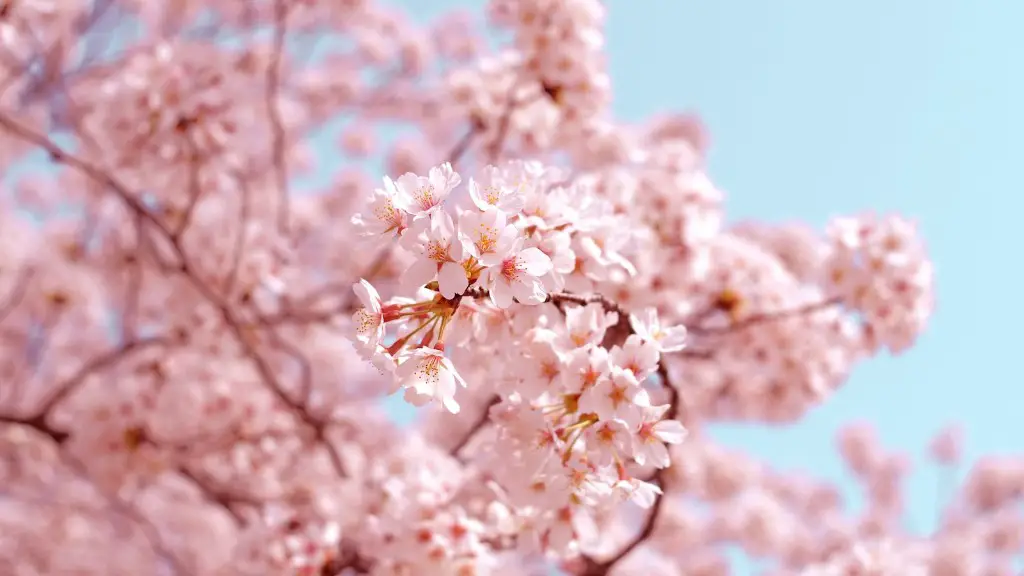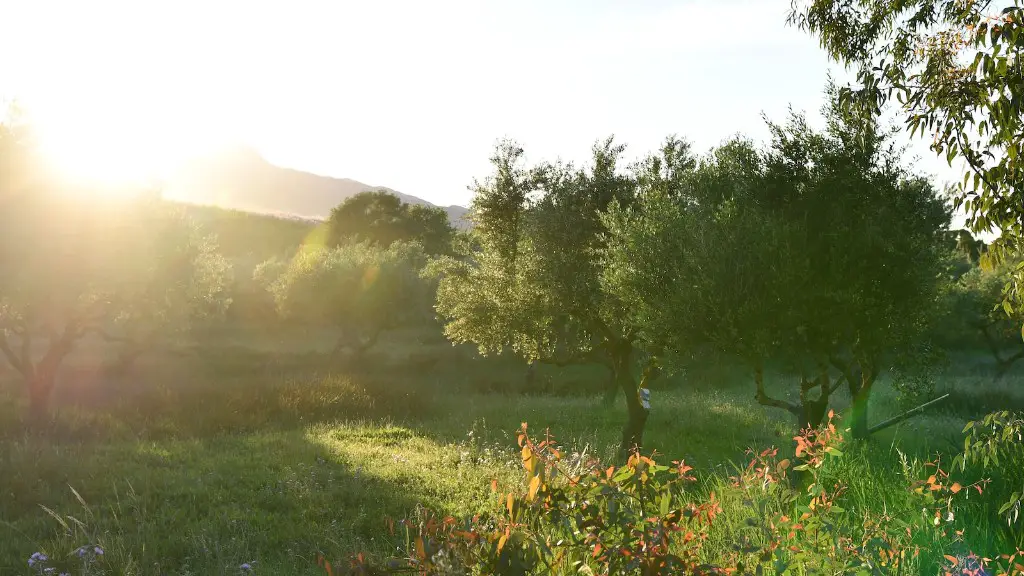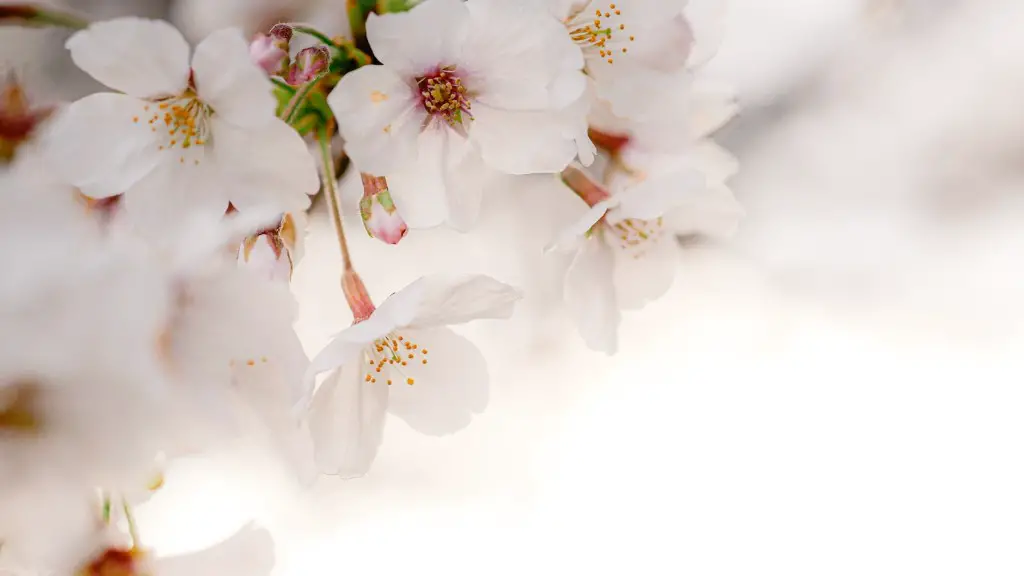Tools and Materials
Painting a palm tree silhouette can add atmosphere to any room, giving it a tropical and exotic feel. Whether you’re a beginner or a professional, here are the tools and materials you will need to paint your own unique palm tree silhouette or offshore scenery:
- Paint in the colors of your choice (preferably acrylic)
- Brush set (variety of sizes)
- Canvas (pre-stretched or unstretched)
- Palm Tree image or picture
- Adhesion/Photo Transfer product (Resin/Gel type is best)
- Palm Tree Outline
Once you have all the necessary supplies, you are ready to start painting your palm tree silhouette.
Creating the Outline
The first step to creating a beautiful palm tree silhouette is to create the outline. To do this, start by taking your palm tree image or photo and adhering it to the surface of the canvas. This is best done with a product like a photo adhesive or a photo transfer gel. Once the image is in place, use an X-acto knife or similar object to carefully trace around the image, creating an outline. This is the foundation for your palm tree silhouette.
After tracing the outline of the palm tree, you should then use the palm tree outline to create a stencil. This will be used when you start painting. Make sure the outline is sealed properly with a sealant before using it, so there’s no smudging or fading of the design.
Preparing the Canvas
Once you have created the outline and have a stencil to work with, you can start to prepare the canvas. Make sure the surface of the canvas has been properly cleaned, and then prime it in the color that you would like to use as the background for your palm tree silhouette. This can be any color you prefer, and should be a color that complements the colors of the palm tree.
Once the canvas has been prepped, you can begin to add texture. If you would like to achieve a “shoreline” effect, you can use sand, shells, and stones to give your painting depth, with the stones depicting the shoreline. This is optional and not necessary, but it can add a more realistic and finished look to your painting.
Painting the Palm Tree
Once the canvas is prepared, you can begin painting your palm tree. Use the outline of the palm tree as a guide when adding colors. For example, if you are going for a sunset or twilight look, use warm colors to indicate the light, and cool colors to indicate the dark. You can also use yellow and orange for the sun, and blues and purples for the night sky.
Once you have the colors in place, you can start to define the silhouette of the tree. Start by painting the trunk in a dark color, and then the fronds outward in lighter colors to create a clear contrast. This will give the silhouette a more defined look, and will also let the viewer clearly see the palm tree. For more texture and depth, add a few layers of colors, and highlight the pieces of the palm tree with white.
Final Touches
Once you have finished painting the palm tree silhouette, you can add a few finishing touches. If you have added a shoreline effect, use some white paint to give it a more realistic finish. You can also use glitter or sgrafitto to add sparkle or texture to your painting. To give your painting a unique look, you can also use a mask or decoupage paper to create a variety of shapes and textures.
Seascape Background
The next step to creating a beautiful palm tree silhouette is to add a seascape background. This can be done with watercolor paints or acrylic paints. Start by sketching out the shoreline on the canvas. To make sure the colors are consistent, wet the canvas with a paintbrush before applying the colors. When painting the seascape, start with a light wash of color and then add layers of color as you build up the depth of the painting.
Once the seascape background is painted, you can begin to add the other elements. Add sea foam along the shoreline, and small details like boats, seagulls, and shore birds. These elements can be added with small brush strokes, or you can use a sponge to create a more textured effect.
Highlighting
The final step to creating your palm tree silhouette is highlighting. Once you have all the elements in place, use bright whites and light colors to add highlights to the painting. If your painting includes a horizon or sky, you can add a few puffy clouds to give it a soft and romantic feel. If you have added a shoreline scene, use light blue or silver to give it a glittery effect.
Once you have finished painting your palm tree silhouette and adding the final touches, you are done! You can now admire your unique tropical masterpiece, hang it proud on your wall, and enjoy the serene and peaceful aura of the sea.
Effects and Finishing
Once you have finished with the painting, you will need to add a few final touches. The first thing to do is to protect it with a sealant, so that the colors don’t fade or flake over time. This will help to ensure that your painting can last for years to come. You can also add a few more effects to make your painting look even more realistic and professional.
One of the best techniques to add an extra element of realism to your painting is to use shadows. Add shadows to the shoreline, seashells and stones. Also, use light to highlight certain portions of the painting. For example, you can use a light source, such as the sun, to highlight the top of a palm tree, or use yellow and white to add a sunset glow.
Preservation
Once you have finished with the painting, it is important to preserve it correctly. Acrylic paintings should be sealed with a varnish and stored away from direct sunlight in a cool, dry place. The painting should not be exposed to extreme temperatures or humidity, as this can cause the colors to fade.
In addition, if you have used any glitter or sequins in your painting, make sure they are properly secured. Apply a sealant to any areas with glitter or sequins, and use tape to ensure they are properly secured. This will prevent the glitter and sequins from flaking or falling off, and will also help to protect the painting from any potential damage or fading.
Cleaning and Restoring
It is inevitable that a painting may become dirty or dull over time. Fortunately, there are ways to clean and restore an acrylic painting. Start by cleaning the painting with a soft cloth and a mixture of water and mild detergent. If there are any smudges or dirt, you can use a clean brush and some rubbing alcohol to remove them.
In addition, if your painting is looking dull or has faded, you can use wax or a varnish to restore the colors. Use small amounts of the wax or varnish, and apply it with a soft brush. Once the wax or varnish has been applied, let it dry for a few minutes and then buff it with a clean cloth. This will help to bring the painting back to life and restore the colors.
Storage and Display
The last step in caring for your painting is deciding where to store and display it. Acrylic paintings should be stored in an area with little humidity and away from direct sunlight. It is also important to store the painting in an acid free archival box or an airtight container to protect it from dust and damage.
When displaying your painting, it is important to choose the right wall. Acrylic paintings should be displayed in an area with little direct sunlight, as it can cause the colors to fade. In addition, make sure the painting is mounted securely, and choose a frame that complements the colors of your painting.



